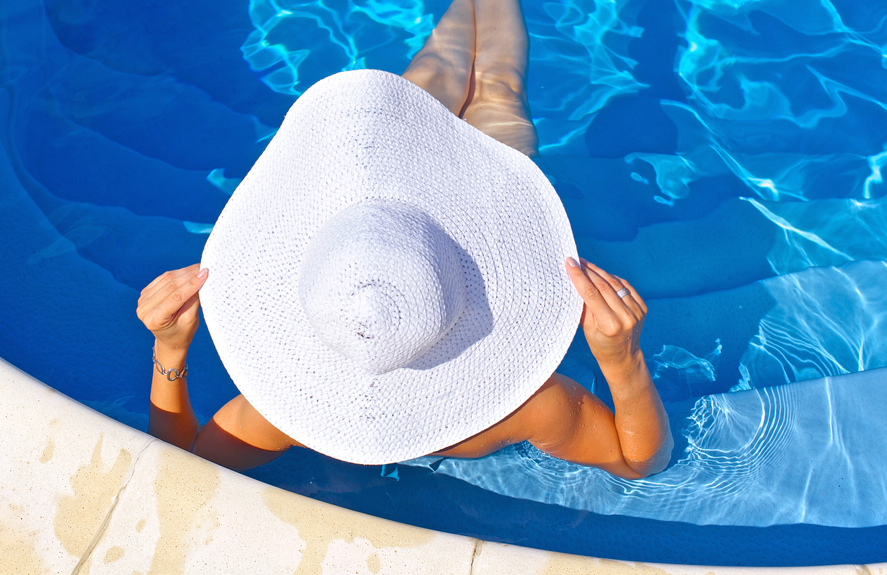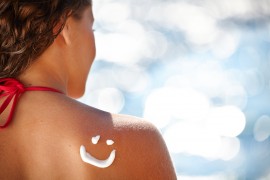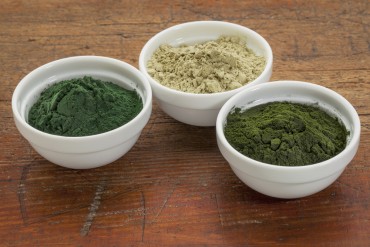If you’re health conscious, chances are you know a thing or two about vitamin D.
You may know, for example, that it’s impossible to enjoy optimal health if you’re low in this nutrient.
But getting enough is harder to do than you might think, which is why leading vitamin D expert Dr Michael F. Holick estimates that vitamin D deficiency is “the most common medical condition in the world.”
Among other things, vitamin D is needed for mental and emotional health, and for a peak-functioning immune system.
There is also a growing body of research demonstrating a link between sub-optimal levels of vitamin D and cancer.
You’ll already know that the best way to get vitamin D is via sunlight.
But what you probably know less about is how easy or otherwise that is to do where you live.
This article is a mini guide to working that out.
I’ve met many health enthusiasts in the UK and similar climates who believe that if they go out jogging in shorts and a T-shirt on a bright winter’s day, that sun exposure will be topping up their vitamin D levels.
It won’t.
In the UK we don’t get enough of the kind of sunlight that causes our bodies to manufacture vitamin D under the skin.
Only one kind of solar radiation does this: UVB sunlight.
Vitamin D is synthesised only when we’re exposed to UVB rays – and unless UVB rays are present it doesn’t matter how warm it is nor how brightly the sun is shining: your skin cannot synthesise vitamin D.
“Vitamin D winter” is when no vitamin D production is possible due to the atmosphere blocking all UVB.
And what few realise is that in the UK, that winter lasts for at least six months of the year, from October to March inclusive.
In much of the US it lasts for four months, from November to February inclusive (though, as I’ll explain shortly, some experts consider these to be underestimates).
Location, location, location
Latitude is a measure of distance from the equator, either north or south.
Humans evolved in the low latitudes of the tropics, an area of year-round UVB sunlight – that is our ideal environment.
Here are a few quick examples to help you understand the connection between latitude and UVB sunlight (the figure after each location is the latitude, either north or south of the equator):
Latitudes with year round UVB sunlight
Bali – 8
Honolulu – 21
Miami – 25
Latitudes with UVB sunlight every day, but only for a couple of hours during the middle of the day in winter
Cape Town – 33
Sydney – 33
Los Angeles – 34
Latitudes with insufficient UVB sunlight for around four months of the year (from November to February in the northern hemisphere)
Madrid – 40
Rome – 41
New York City – 41
Latitudes with insufficient UVB sunlight for around 6 months of the year (from October to March in the northern hemisphere)
Anywhere north (or south) of 50 degrees.
The latitude of the UK? It ranges from 50 to 58, with London at 51 and Aberdeen at 57.
So getting enough vitamin D from sunlight is easily done if you live in Miami; impossible if you live in Manchester – unless you make a point of spending time at lower latitudes during the October to March period.
If your location isn’t listed above and you want to know its latitude, that couldn’t be simpler: just type into Google the name of the town or city where you live (or the nearest to you) followed by the word latitude.
And depending on whether it’s below 30, 30-40, 40-50, or above 50, you’ll know where you are on the scale above.
It is the opinion of Harvard Medical School that, “Except during the summer months, the skin makes little if any vitamin D from the sun at latitudes above 37 degrees north or below 37 degrees south of the equator. People who live in these areas are at relatively greater risk for vitamin D deficiency.”
37! Remember, in the UK we’re at 50 to 58! Sultry Ibiza is at 38, sun-soaked Naples in southern Italy is at 40, and Cannes on France’s balmy Riviera is at 43.
Yet Harvard Medical School is not the only credible authority saying that even these Mediterranean locations – much nearer the equator than we are – don’t have the right kind of sunlight year round.
In fact, some would tell you that the figures I gave you above understate the lengths of the “vitamin D winters” in the various locations.
For example, according to Krispin Sullivan, a certified nutritionist and vitamin D researcher: “In much of the US […] six months or more during each year have insufficient UVB sunlight to produce optimal D levels. In far northern or southern locations, latitudes 45 degrees and higher, even summer sun is too weak to provide optimum levels of vitamin D.”
Sullivan is among the vitamin D experts who say that 30 is the magic number when it comes to latitude and vitamin D production: if we are further from the equator than this, we won’t be meeting our D needs year round from sunlight alone.
How long can we store vitamin D?
Vitamin D can be stored in fatty tissue during times of plenty, but when stores are not being regularly replenished, they quickly decline. In one study, submariners with zero UV exposure had vitamin D levels that declined by half in a period of two months.
Also, the body is quite limited in how much D it can produce each day and once this threshold is reached, more exposure won’t lead to more D production.
So those of us in the UK can worship the sun at every opportunity, and soak it up on a summer holiday in Benidorm, Barbados or Bali, but our stores will have fallen below optimal long before our six-month vitamin D winter is out.
Therefore, we need to have a plan in place for replenishing our vitamin D stores during those months. And if we’re not able to jet off somewhere sunny, the two choices are dietary sources of D (including oily fish such as salmon and sardines) and supplementation.
When UVB rays are present, how much sun exposure is “enough”?
There is no simple answer to this. It depends on how close to the equator you are, and on your skin colour, among other things.
If it’s summer where you are (or you’re in the tropics) and you have very fair skin, as little as 10 minutes a day could do it, assuming you are exposing most of your skin to the midday sun (i.e. wearing a bathing suit but no sunblock). You’ll need substantially longer if you’re only exposing hands, arms and face.
And the darker your skin, the more sun exposure you’ll need before you’ll synthesise enough vitamin D.
Here’s the take-home advice about vitamin D and sun exposure:
- Wherever you live, if you don’t yet know exactly when in the year UVB rays are and are not present in your location, find out.
- When there are UVB rays present where you live, try to expose your skin to the sun every day, using the guidelines above, and your own research, to determine how much sun exposure you need each day to keep your vitamin D stores replenished.
- Unless you can afford to take holidays year round, don’t go on holiday when there are UVB rays where you live – go when there are not. If you’re in the UK, this means holidaying between October and March (in locations where there is UVB sunlight at the time).
- Get your vitamin D level tested using the 25(OH) D test.
- If it is lower than the 50 ng/ml leading authorities now say is necessary for optimum health, it’s important to turn this around by including vitamin-D-rich foods in your daily diet and also supplementing for a while. This is best done under the supervision of a qualified nutritionist.





i tried to find latitude on Google Maps as you suggest but cant see it. Any tips? I live in Bournemouth in the South of England.
View CommentHi Corinne – I use Google not Google Maps. If you type in a place name followed by “latitude” or “coordinates”, you’ll see two large, bold figures above the search results. The first will have an N or S after it; the second and E or W. You want the first figure (the other is the longtitude), and the N or S tell you whether your location is North or South of the equator – a piece of information most of us probably already know! I can’t guarantee this will work for every location on the planet, but I’ve typed some pretty small, obscure places in and Google hasn’t failed yet. Bournemouth’s latitude is 50.7 degrees north of the equator.
View CommentAt last, at last! Thank you Sarah. I have been tellig people this for years, but it is great to finally have some good numbers to work with regarding latitudes. Roll on January in the Maldives – what better way to escape the British winter? All in the name of vitamin D top-up of course…
View CommentLatitude can also be found on an Ordnance Survey map of the area you live in.
View CommentThanks that was very useful. I am at present in Dubai latitude 25 – so I am enjoying the UVB.. don’t want to go back to the UK! However, question – I was surprised to hear that there is Vit D deficiency here as well! Could be the locals who are covered when they go out? Any thoughts?
View CommentThanks again.
H Anjali – Yes, this is inadequate exposure of skin to sun due to wearing too many clothes and also overuse of sun blocks/high SPF sun tan lotions (which block vitamin D synthesis).
View CommentA very interesting question was posed to me on this subject during a vitamin D discussion. As raw foodists, is there a chance that we might be able to better synthesise vitamin D in our skin when UVB levels are low but not absent? I do not know if any research has been conducted on this, but what is known is that with better nutrition, particularly better antioxidant status, the skin microcirculation is improved. What would be really interesting would be to compare conversion rates of vitamin D to its active form between people on a living foods vegan diet and those with similar skin tone on a normal diet. I have no idea if our level of cellular health would affect the conversion rate for a given level of UVB radiation. The problem with many studies is that they are testing the “average” person, who may be experiencing a totally different level of health from that of people who have made a conscious decision to optimise their health through nutrition and lifestyle choices. I have so far not been able to find any information on how many factors might be involved in how well ergosterol is converted to ergocalciferol in the presence of UVB light. Does anyone have any further infomation on this? It would certainly make for a great research project!
View CommentThis is a great question, and one of so many useful “effect of nutrition and lifestyle on health” hypotheses that could and should have been scientifically tested. If only the great and good of medical science were not so occupied trialling new drugs; if only more of those resources went into something useful – like conducting research that answers important questions like this one.
View CommentHow much UVB you need to get enough vitamin D might vary according to skin type.
View CommentAbsolutely. I only briefly touched on that in this particular article (“And the darker your skin, the more sun exposure you’ll need before you’ll synthesise enough vitamin D”). A little more detail on it in this one – http://www.sarahbesthealth.com/sun-exposure/ – around two-thirds of the way down.
View CommentI should note that not all races evolved in the tropics. Although the first humans may have come from the tropics, Caucassian people have been living in mid-latitudes for thousands of years. And certain races, such as the Inuit, Aluit, Sami and the Nordic peoples have all been living north of the 50 possibly for hundreds of generations.
View CommentNow, in pandemic year 2 (2021) it is patently clear that PHARMA is so disinterested in good health, its profiteers seek to dismiss Vitamin☀D studies and endlessly fear-monger best levels with hypercalcemia risk which does not even appear until at least an extreme level of 150ng/ml [375nmol/L]!
View CommentCheap, and most effective Ivermectin is also being blocked!
Good health would destroy their business model!
Same here. I can’t eat dairy anymore or I’ll break out. My face was clear after stopping dairy consumption then I had some and I broke out all over my face. It’s now getting better since I stopped again. It sucks that some people can drink and eat and drink whatever and still have clear skin!
View Comment“Race” (which is a construct, not a fact of biology), is far less important than the fact that ALL humans did indeed evolve in the tropical latitudes. We were fully human when we left Africa. “Hundreds of generations” is next to nothing in the face of the timeframe of biological evolution and humanity’s relationship with the sun.
View CommentGreetings from sunny Los Angeles (34 latitude)
Truly fabulous post. I’ve been studying vitamin D for nearly a decade. This post helped me understand this topic so much better. You have a talent for making difficult things simple. Thank you!
I am working on a post on this topic — I will link back to your post.
Ann Marie
PS: Here’s a good list of cities by latitude…
https://en.wikipedia.org/wiki/List_of_cities_by_latitude
View CommentWhat I got from Dr Holick’s book was that you only get UVB from 10:00 to 2:00 even in lower latitudes.
View CommentNot very exact, i’m looking for how much vitamin D i gain per minute and how much i needed it. 10 minutes a day during the summer if i live in the tropical doesn’t tell me how OFTEN i needed that to maintain a healthy amount of Vitamin D.
I’m assuming that 10 minutes during summer in the tropical with no clothe would get me around 10,000 IU of vitamin D. The recommended vitamin D per day is 4000 IU. So 10 minutes a day would cover me for the next two and a half days. << I want that kind of exact detail.
View CommentThe part that i really want to know is how much vitamin D per minute at X time of the day.
View CommentLike a table showing at X time, at Y latitude would yield me how much vitamin D etc. Then subtract that by the skin color.
Since vitamin D production varies so much from individual to individual and depends on so many factors in addition to skin colour, I’m not sure it is possible to state any meaningful “IU per 10 minutes” figure. However, if you come across this info, do let me know – I’d be interested!
View CommentThis now appears to be false. New studies suggest that you can produce vitamin D in latitudes up to and possibly beyond 60 degrees for several hours each day, all year.
https://www.westonaprice.org/health-topics/the-pursuit-of-happiness/
View CommentI have read (possibly from Dr. Mercola’s site) that in the summer months during the peak hours of the day, that a fair to medium skinned person produces approximately 25,000 IU of vitamin D within around 15 minutes (on average, of course). Once the body has produced this amount, the UVA rays will go about destroying any excess. This tells me that 1) 25,000 is a good ballpark for how much our bodies REALLY need, and 2) The body is amazingly wise in the way it regulates its optimum levels!
View Commentjust found a great mercola article on the topic:
https://articles.mercola.com/sites/articles/archive/2012/03/26/maximizing-vitamin-d-exposure.aspx
View CommentWonderful post, thank you!
There is an app called dminder that you can download on your phone. If you give the app access to your location, it will automatically pick up the UVB emitted over the course of the day wherever in the world you are (or tell you when next there will be UVB emitted in your area). You can also log your sun exposure time to estimate how much Vitamin D your skin is synthesizing (it takes into account your Fitzpatrick skin type and how much of your skin is exposed). I don’t know how accurate the Vitamin D estimation is, but I enjoy knowing when there is good UVB exposure in my city 🙂
View Comment